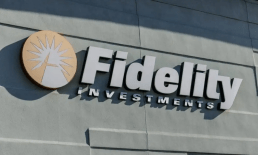Fidelity Reportedly Preparing to Debut In-House Stablecoin
Asset manager Fidelity Investments is reportedly preparing to launch its own stablecoin.
The Boston-based company, which manages more than $5 trillion in assets, is in the advanced stages of testing the coin, the Financial Times (FT) reported Wednesday (March 25), citing sources familiar with the matter.
According to the report, the planned launch is part of Fidelity’s expansion into the burgeoning market for tokenized versions of US Treasuries. The report adds that the company has also recently filed to introduce a digital version of a U.S. money market fund at the end of May, which would put it in competition with rival asset management groups BlackRock and Franklin Templeton.
As the report notes, Fidelity is making these efforts at a time when federal regulators are changing their attitude toward cryptocurrencies in the wake of President Donald Trump’s election last year.
Trump had embraced crypto on the campaign trail — marking a contrast with the stricter approach by the Biden White house — and has pledged to promote the growth of dollar-backed stablecoins. There is also a pair of stablecoin bills before Congress.
Fidelity published a report earlier this year arguing that central banks and world governments would be among the next “significant investors” in bitcoin. That report noted that while many countries hold bitcoin, it is typically through government seizures and recoveries from criminal prosecutions. Many governments also have rules for the selling or handling of this bitcoin and can’t list them as part of their treasury.
“We expect 2025 to be the year this changes for both acceptance and adoption,” wrote Fidelity’s Matt Hogan. “This is to say, we anticipate more nation-states, central banks, sovereign wealth funds, and government treasuries will look to establish strategic positions in bitcoin.”
Meanwhile, PYMNTS wrote last week about use cases for stablecoins beyond crypto market liquidity, with applications that include cross-border payments.
“Traditional international transactions remain slow and expensive, burdened by correspondent banking networks and legacy financial systems,” that report said.
“Stablecoins, pegged to fiat currencies, promise a faster and cheaper alternative. By leveraging blockchain rails, stablecoins can bypass intermediaries, facilitating near-instantaneous settlements at potentially lower costs.”
For the Outlook 2030 B2B event at the end of last year, PYMNTS spoke with Ran Goldi, SVP, payments and network at Fireblocks, and Nikola Plecas, Visa Crypto’s head of commercialization, to explore the benefits and myths surrounding blockchain-based payments.
This included a discussion of the concept of the “stablecoin sandwich,” a method of using stablecoins to transfer value between currencies, which helps illustrate blockchain’s efficiency in cross-border transactions.


